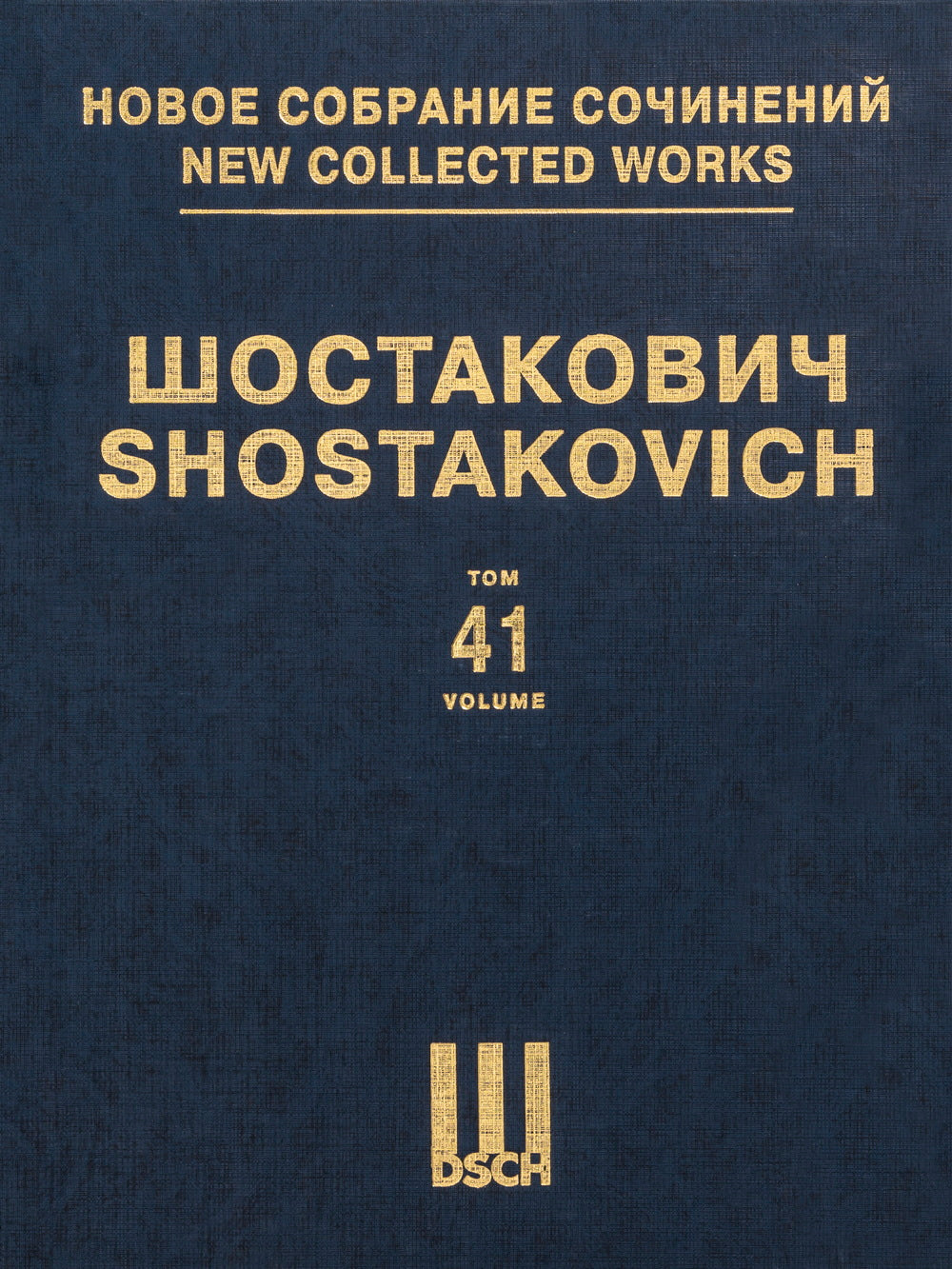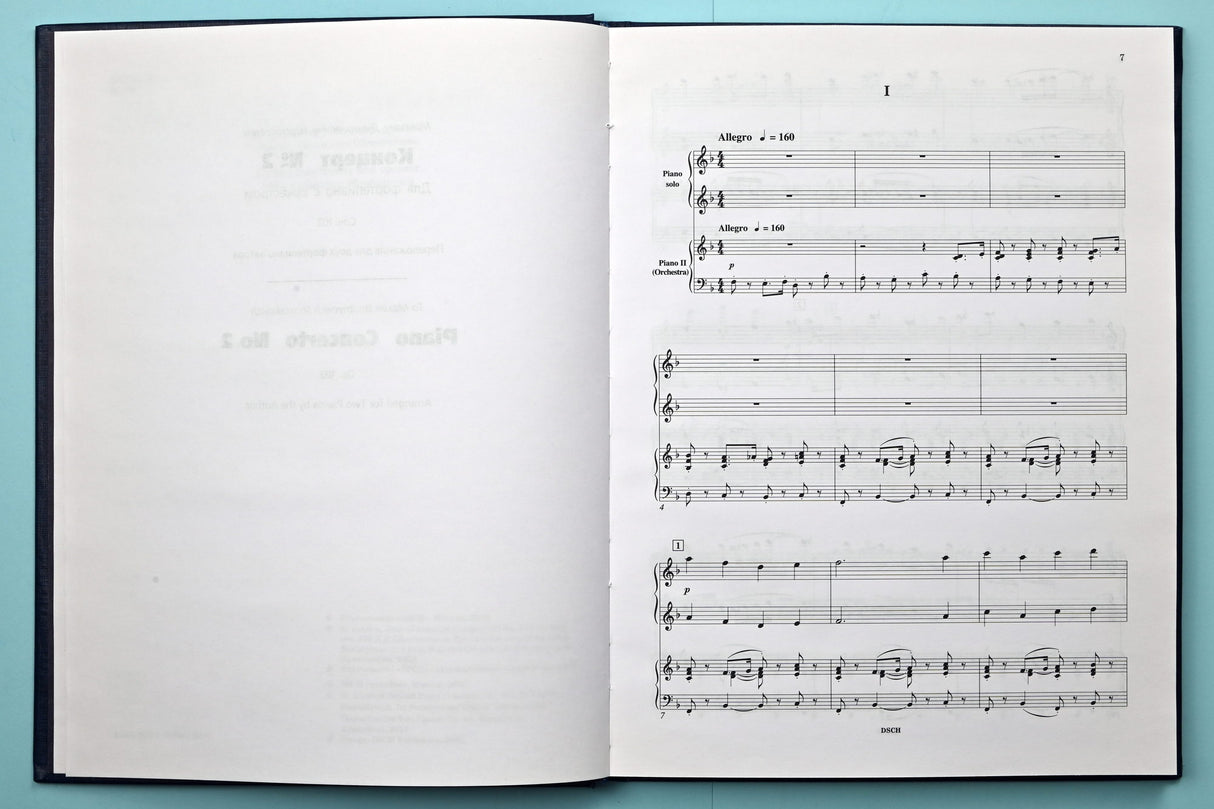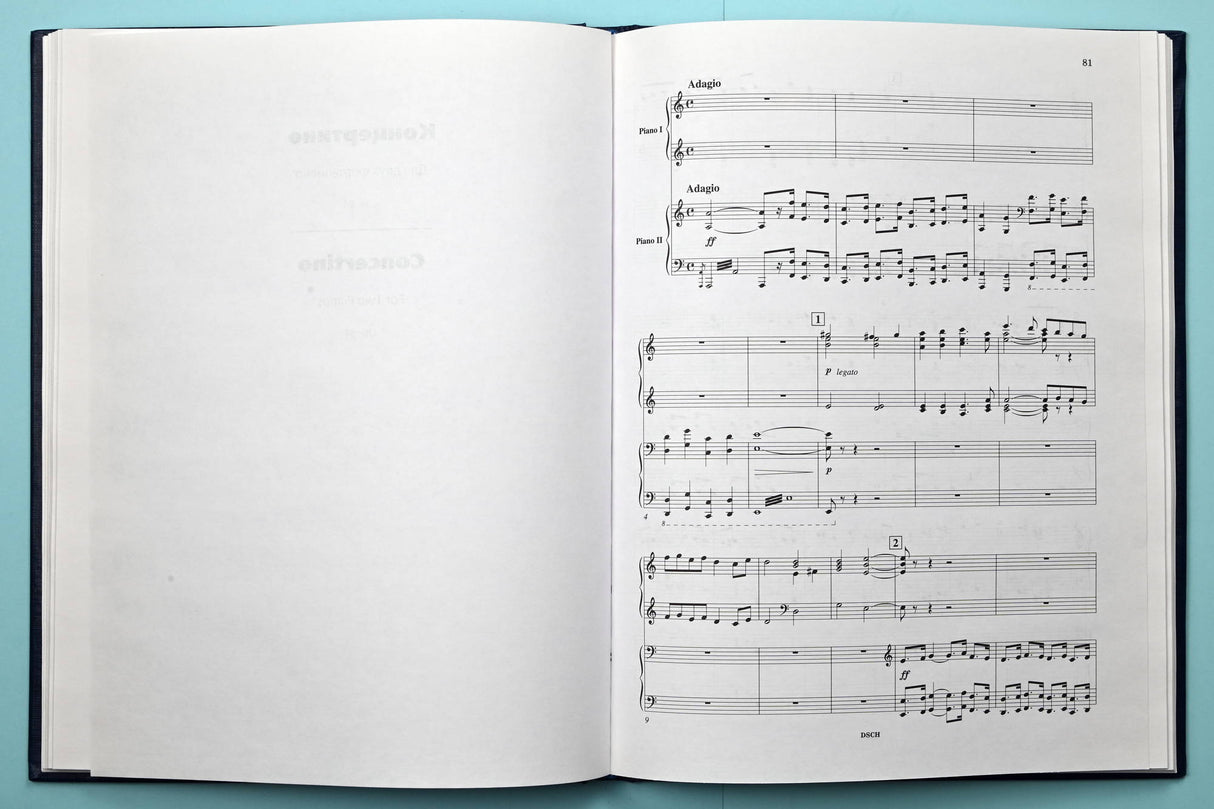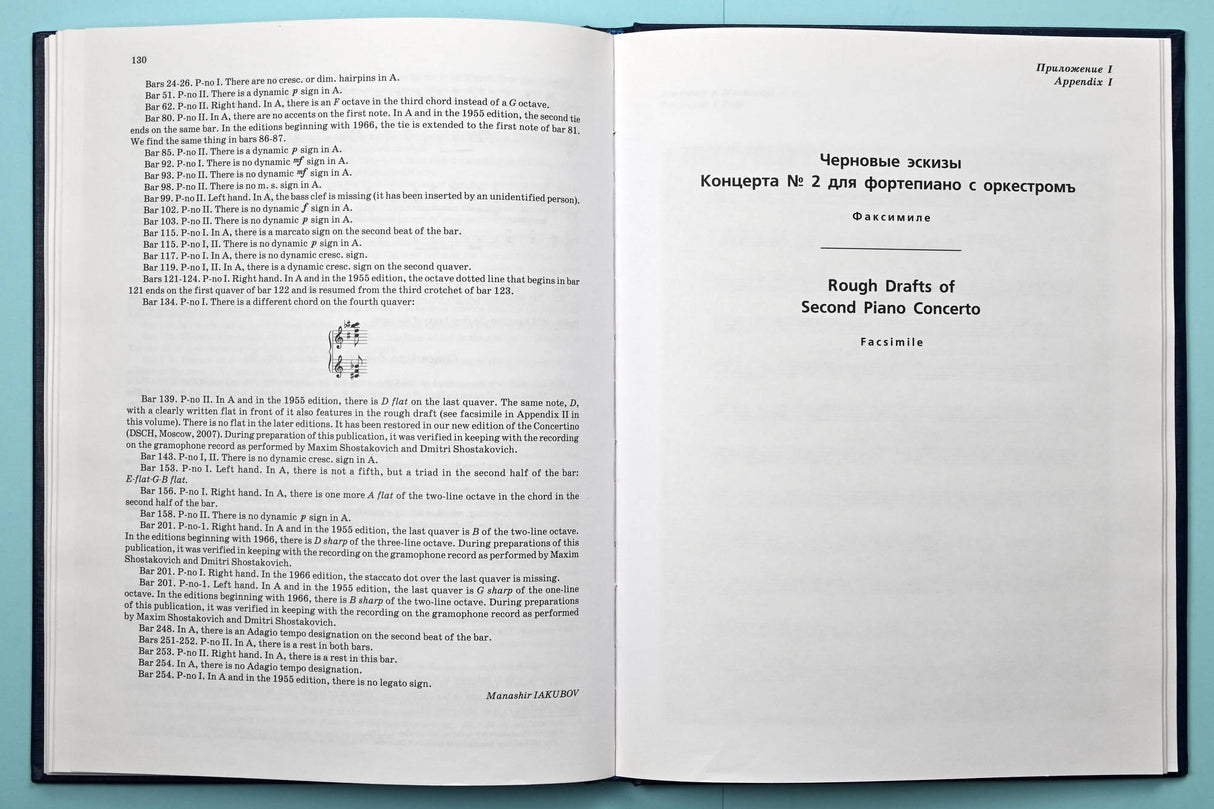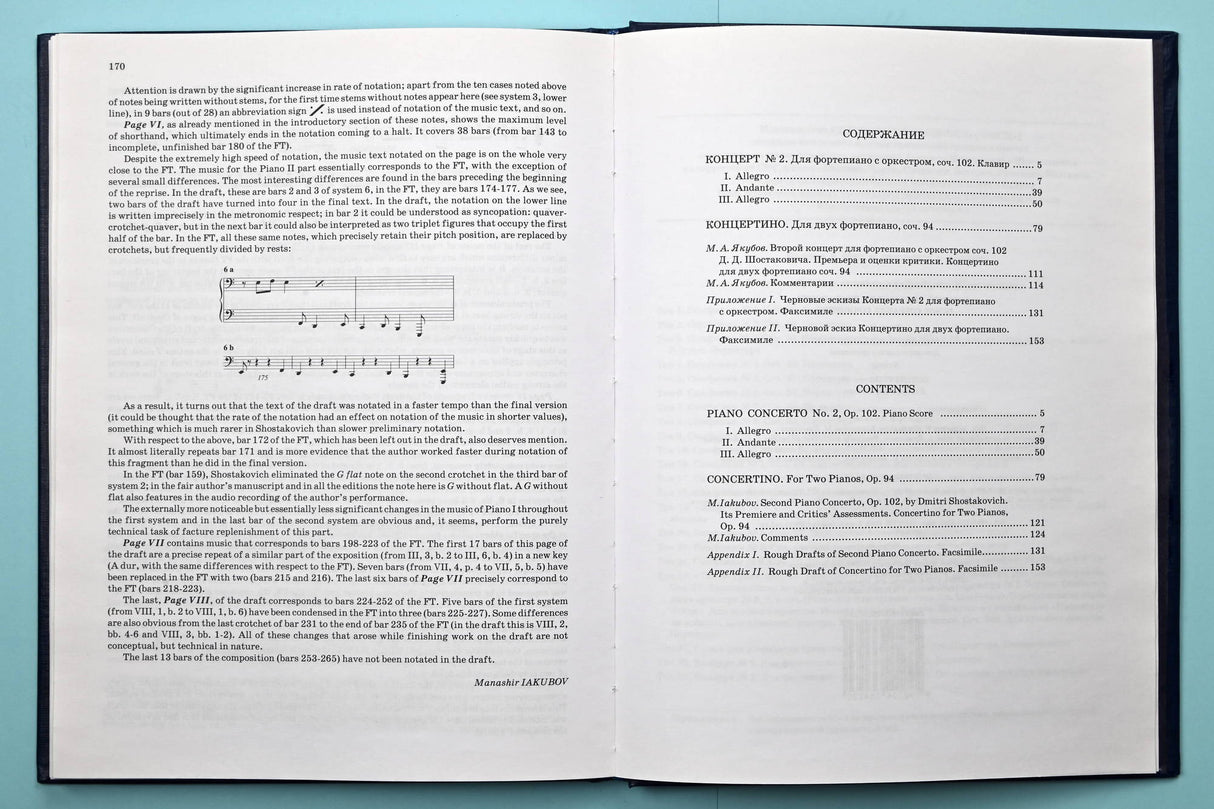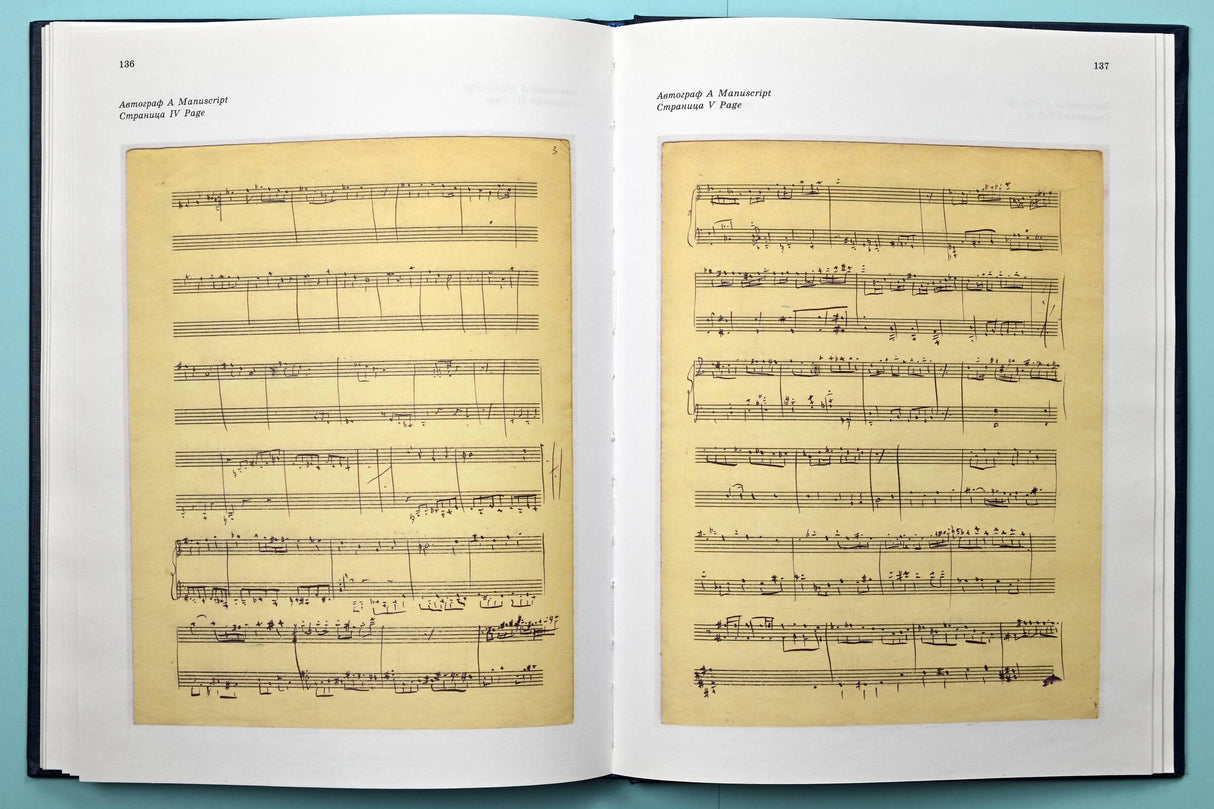Shostakovich: Piano Concerto No. 2, Op. 102 and Concertino for Two Pianos, Op. 94
New Collected Works Volume 41
In stock and typically ships within 1 business day.
- Composer: Dmitri Shostakovich (1906-1975)
- Format: Piano / Piano Reduction
- Instrumentation (this edition): Piano, Piano Reduction
- Originally for: Piano, Orchestra, Piano I, Piano II
- Binding: Hardcover
- ISMN:
- Size: 9.1 x 11.8 inches
- Pages: 176
- Urtext / Critical Edition
Description
The author's arrangement for two pianos of Concerto, Op. 102, was first published in 1957 at almost the same time as the score.
The author's manuscripts of the score and the piano score contain rather a large number of discrepancies which at times are rather considerable. The differences in the parts of the solo piano are particularly significant. in some cases, the Piano solo part is written in less detail in the score than in the arrangement, probably because the composer thought some of the details were too Minor for the conductor and only wrote them in the music text of the arrangement. But in other cases, the changes in the Piano solo part possibly arose during rehearsals, so the author only made them in the arrangement, without also making them in the score.
An attempt to unify the score and the piano score was made when preparing the corresponding volumes of Shostakovich's Collected Works put out by Muzyka Publishers at the beginning of the 1980. At this time, the text was collated once more with the author's manuscripts and all the lifetime editions of the Concerto. the notes in the copy of the first edition of the score belonging to Shostakovich and the audio recording of the Concerto performed by the composer himself, which was done in 1958, were also taken into account. (These author's documents were first referred to for clarifying the text during preparation of the 1982 edition.) But unification was not carried out to the fullest extent. Moreover, due to the censorship that existed at that time, the dedication to Maxim Shostakovich, who emigrated from the Soviet Union in 1981, was not printed in either the score or the piano score.
in this edition, the Piano solo part largely follows the text of the author's arrangement for two pianos, but whenever possible its special features in the score were also taken into account. The most significant discrepancies in the Piano solo part are noted in the comments. All the comments, apart from those specifically specified, relate to the Piano solo part.
There is a note in the editions of the score and piano score of the 1980s indicating the length of the work—around 16 minutes. This note does not feature in the author's manuscripts or lifetime editions of the Concerto.
The bar-by-bar comments take into account the "Notes" from Volume 12 of Collected Works (1982) and the Comments of Volume 40 of New Collected Works (2009). Some of the most frequent discrepancies relate to replacement of the crotchet with a quaver and a quaver rest (or vice versa). These discrepancies are usually not specified in the bar-by-bar comments. There is quite a large number of differences between the Piano II part and the score with respect to dynamic nuances, placement of ties, and so on. These differences were most likely dictated by the specifics of the performance of the two pianos. for the most part, they are not stipulated in the comments either.
The fair author's manuscript of the Concertino for two Pianos, Op. 94, is kept in the Glinka State Central Museum of Musical Culture, and the rough draft is kept in Dmitri Shostakovich's Archive. The Concertino was first published in 1955 by the USSR Music Foundation. It came out no later than September, which is shown by the author's presentation inscription on the copy kept in Dmitri Shostakovich's Archive: "To dear Maxim Shostakovich, first performer of this composition, from your loving D. Shostakovich. 26/IX 1955, Moscow". Subsequently, during the composer's life time, the Concertino was republished several times (in 1966, 1970, and 1975) by Muzyka Publishers.
There are rather a large number of various Minor differences between the 1966 edition (edited by Elena Khoven) and the author's manuscript and the 1955 edition, which is very close to the author's manuscript. in particular, in the edition edited by Elena Khoven, a well-known pedagogue (she was Maxim Shostakovich's professor at the Central Music School), great attention is given to instructional and didactic aspects, for example, to the fingering, which is totally absent in the author's manuscript. the later editions reproduce Elena Khoven's edition.Unfortunately, there is no information about the extent to which this edition was coordinated with the author.
in 1983, another edition of the Concertino came out in Volume 13 of Dmitri Shostakovich's Collected Works (Muzyka Publishers, Moscow), which was also based on the 1966 version. this edition, which was the least successful of all, totally left out the composer's rehearsal numbers, which are vital for the performers, from the music text without any explanation.
When preparing this publication, the texts of the author's manuscript and first lifetime edition were used. in some cases, versions of the texts in the 1966 and later editions were taken into account.
Works:
Publishers use a lot of words to describe what they sell, and we know it can be confusing. We've tried to be as clear as possible to make sure you get exactly what you are looking for. Below are descriptions of the terms that we use to describe the various formats that music often comes in.
Choral Score
A score for vocalists that only contains the vocal lines. The instrumental parts are not there for reference. Generally, cheaper than a vocal score and requires multiple copies for purchase.
Facsimile
Reproductions of the original hand-written scores from the composer.
Full Score
For ensemble music, this indicates that the edition contains all parts on a single system (there are not separate parts for each player). In larger ensembles, this is for the conductor.
Hardcover
Hardbound. Generally either linen-covered or half-leather.
Orchestral Parts
Similar to a wind set, this is a collection of parts. In the case of strings, the numbers listed are the number of copies included, though generally these are available individually (often with minimum quantities required).
Paperback
When publishers offer multiple bindings (e.g. hardcover) or study scores, this is the "standard" version. If you're planning to play the music, this is probably what you want.
Performance / Playing Score
A score of the music containing all parts on one system, intended for players to share. There are not separate parts for each player.
Set of Parts
For ensemble music, this indicates that there are separate individual parts for each player.
Solo Part with Piano Reduction
For solo pieces with orchestra, this is a version that contains a piano reduction of the orchestra parts. For piano pieces, two copies are typically needed for performance.
Study Score
A small (think choral size) copy of the complete score meant for studying, and not playing. They make great add-ons when learning concertos and small chamber works.
Vocal Score
A score prepared for vocalists that includes the piano/organ part or a reduction of the instrumental parts.
Wind Set
For orchestral music, this is a collection of wind and percussion parts. The specific quantities of each instrument are notated.
With Audio
In addition to the printed music, the edition contains recordings of the pieces. This may be an included CD, or access to files on the internet.
With / Without Fingering (Markings)
Some publishers prepare two copies - a pure Urtext edition that includes no fingering (or bowing) suggestions and a lightly edited version that includes a minimal number of editorial markings.
